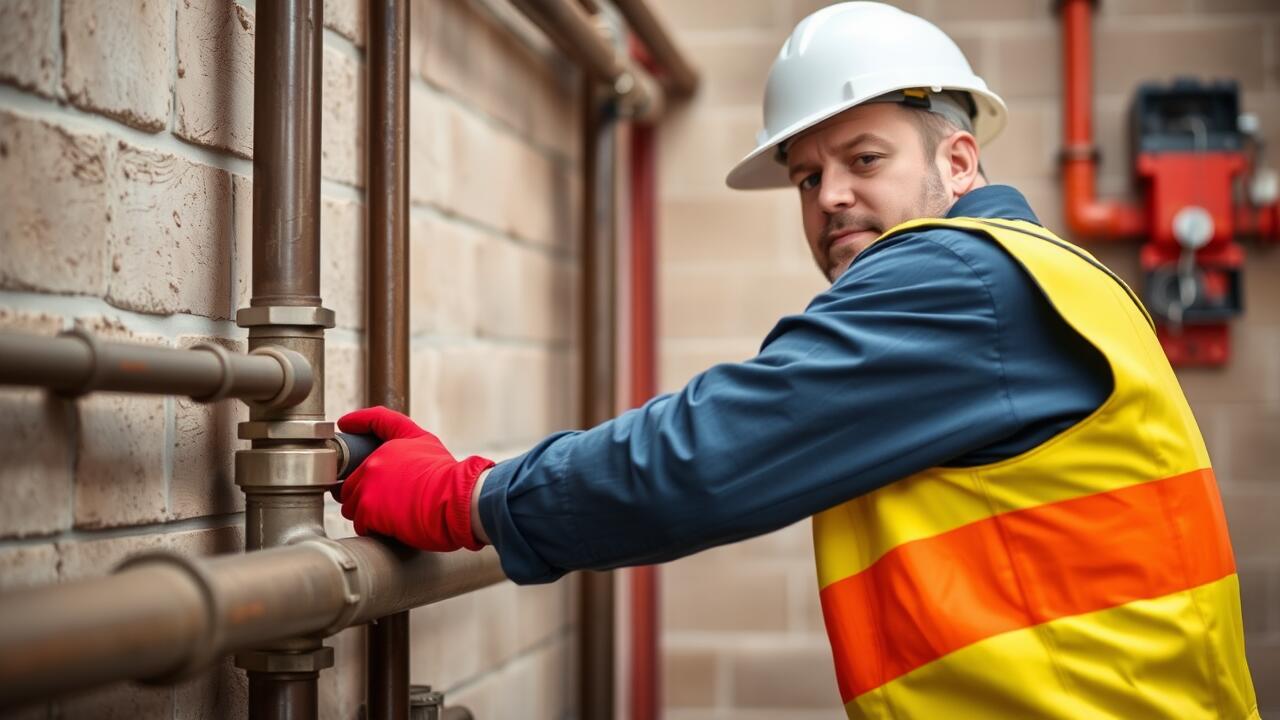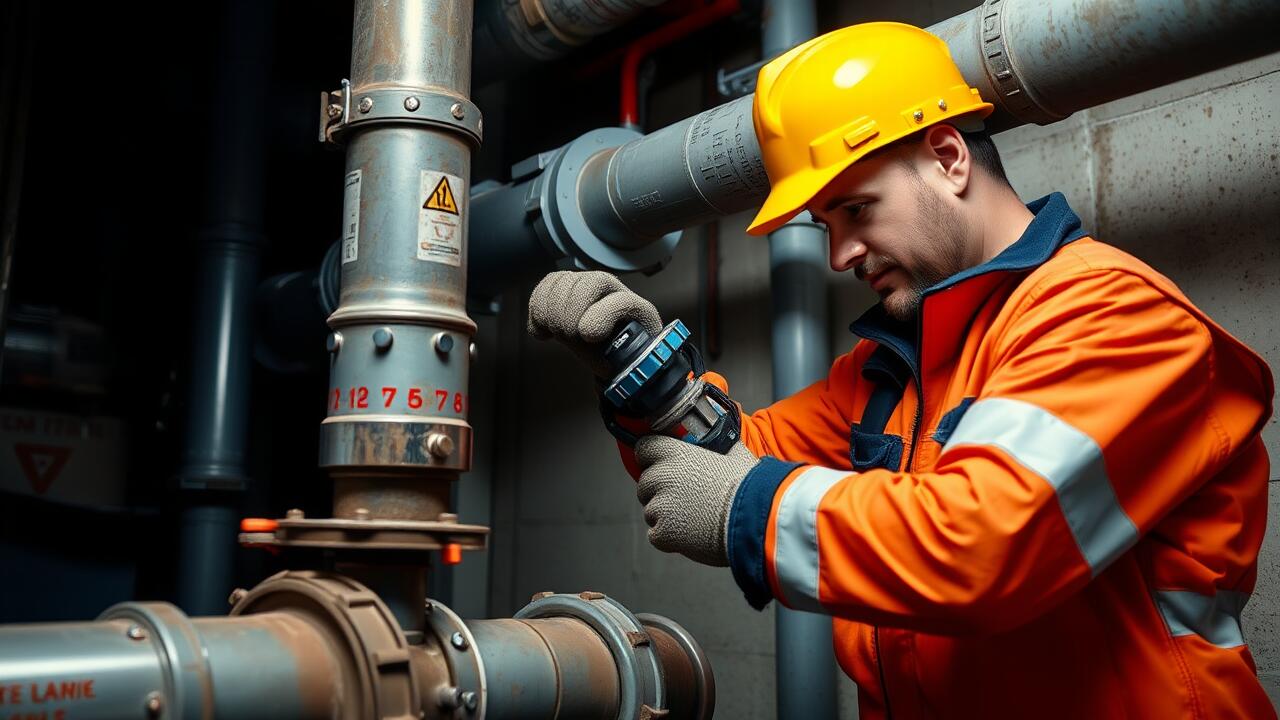
Cost-Effectiveness of PEX Pipes
PEX pipes offer significant cost advantages in plumbing systems. Their lightweight nature simplifies handling, leading to reduced labor costs during installation. This efficiency helps homeowners save money upfront, especially in projects like pipe installation in Sherman Oaks, Los Angeles, where labor costs can be a significant factor. Additionally, PEX is less expensive than traditional materials like copper or PVC, which further enhances its appeal for budget-conscious consumers.
Long-term savings associated with PEX pipes are notable. Their resistance to corrosion and scale buildup translates to lower maintenance costs over time. Unlike metal pipes, PEX does not develop rust or increase the risk of leaks, which can result in costly repairs. Consequently, homeowners can enjoy reduced energy bills due to the efficient thermal insulation properties of PEX. This financial benefit solidifies PEX as a wise investment for both new constructions and renovations.
Analyzing Long-Term Savings
PEX pipes offer significant long-term savings for homeowners and businesses due to their durability and resistance to corrosion. Unlike traditional metal pipes, PEX does not suffer from the same level of deterioration over time. This leads to fewer repairs and replacements, which can be a considerable expense in the plumbing system. Additionally, the lightweight nature of PEX allows for easier handling and installation, which can reduce labor costs.
When assessing the cost-effectiveness of PEX, one must also consider the efficiency in energy use. PEX provides better insulation qualities compared to metal pipes, which can lessen heat loss in hot water systems. This not only saves on energy bills but also contributes to a more sustainable plumbing system. Homeowners who choose solutions like Pipe installation in Downtown LA, Los Angeles can benefit from lower utility costs over time, making PEX a financially wise choice.
PEX Pipe Maintenance Requirements
PEX pipes are known for their durability and low maintenance needs, which makes them a popular choice in modern plumbing systems. Regular inspections are recommended to ensure no visible damage or leaks are present. Homeowners should also be aware of the water temperature and pressure limits for PEX to prevent unnecessary wear. Proper installation is critical, particularly in areas like Pipe installation in Downtown LA, Los Angeles, where environmental factors can impact longevity.
While PEX systems are resilient, it is essential to address any issues immediately to prevent more significant problems over time. Using PEX-specific tools for repairs and modifications is advisable to maintain the integrity of the system. Avoid exposing PEX pipes to direct sunlight for prolonged periods, as UV light can degrade the material. By following these simple guidelines, homeowners can keep their PEX plumbing systems functioning effectively for many years.
Keeping Your PEX System in Optimal Condition
Maintaining your PEX system requires regular checks to prevent potential issues like leaks or kinks. PEX pipes are designed to resist corrosion and scale buildup, but monitoring for any signs of wear is essential. When performing maintenance, inspect connections and fittings for proper sealing. Regularly assessing the system ensures optimal performance over time. If any complications arise, consulting a professional with experience in pipe installation in Downtown LA, Los Angeles, can provide quick and effective solutions.
Temperature fluctuations can affect PEX systems, so it is crucial to protect pipes from extreme conditions. Insulating exposed sections can help prevent freezing in colder months while minimizing the risk of damage from overheating in hot environments. Additionally, avoid using harsh chemicals during cleaning, as they can compromise the integrity of the pipes. A thorough understanding of the system’s requirements contributes to longevity and reliability, making regular upkeep a priority for homeowners.
Environmental Impact of PEX Pipes
The environmental impact of PEX pipes has garnered attention as their use in construction and plumbing systems increases. PEX, or cross-linked polyethylene, is known for its flexibility and durability, which can lead to fewer materials wasted during installation. These pipes are lighter than traditional rigid materials, reducing transportation emissions during delivery. Moreover, their long lifespan minimizes the need for frequent replacements, further conserving resources over time.
In urban areas such as Downtown LA, Los Angeles, the adoption of PEX pipe technology presents an opportunity to enhance sustainability efforts. The reduction in the use of energy-intensive materials like copper and PVC contributes to better environmental outcomes. Additionally, advancements in recycling technologies for PEX enable the material to be repurposed at the end of its life cycle, minimizing landfill waste and promoting a circular economy within the plumbing sector.
Sustainability and Recycling Considerations
PEX pipes have gained attention not only for their practical benefits but also for their sustainability prospects. These pipes are made from cross-linked polyethylene, a material that is durable and has a long lifespan, reducing the need for frequent replacements. When assessing pipe installation in Downtown LA, Los Angeles, it is crucial to consider how PEX systems can contribute to a more sustainable urban infrastructure. High resistance to corrosion and scale buildup ensures fewer repairs and maintenance tasks, further minimizing resource use over time.
Recycling options for PEX pipes are currently limited, but the industry is evolving to address these concerns. While PEX is not widely accepted in traditional recycling streams, many manufacturers are exploring ways to improve its end-of-life management. As cities like Los Angeles push for greener construction solutions, understanding the lifecycle of PEX materials becomes increasingly relevant. Encouraging the development of recycling programs can enhance the environmental profile of PEX, supporting both projects and communities moving towards sustainability.
FAQS
What are PEX pipes and how do they differ from traditional plumbing materials?
PEX pipes, or cross-linked polyethylene pipes, are flexible plastic pipes used in plumbing systems. Unlike traditional materials such as copper or PVC, PEX is resistant to corrosion, is easier to install due to its flexibility, and generally has lower material costs.
How do PEX pipes contribute to cost-effectiveness in plumbing systems?
PEX pipes can reduce overall costs through lower material prices, decreased labor time due to simpler installation, and fewer fittings needed compared to rigid piping systems. Additionally, they can enhance energy efficiency, leading to long-term savings on utility bills.
What are the maintenance requirements for PEX pipes?
PEX pipes require minimal maintenance. Regularly inspect for any signs of wear or damage, ensure proper temperature controls to avoid freezing, and keep an eye on connections. There’s no need for frequent cleaning or treatment, unlike some traditional systems.
Are PEX pipes environmentally friendly?
Yes, PEX pipes are considered environmentally friendly as they are energy-efficient and can be recycled at the end of their life cycle. They also reduce water waste and energy consumption due to less heat loss compared to metal pipes.
Can PEX pipes be used for both hot and cold water supply?
Yes, PEX pipes are versatile and can be used for both hot and cold water applications. They can withstand high temperatures, making them suitable for hot water distribution in residential plumbing systems.



